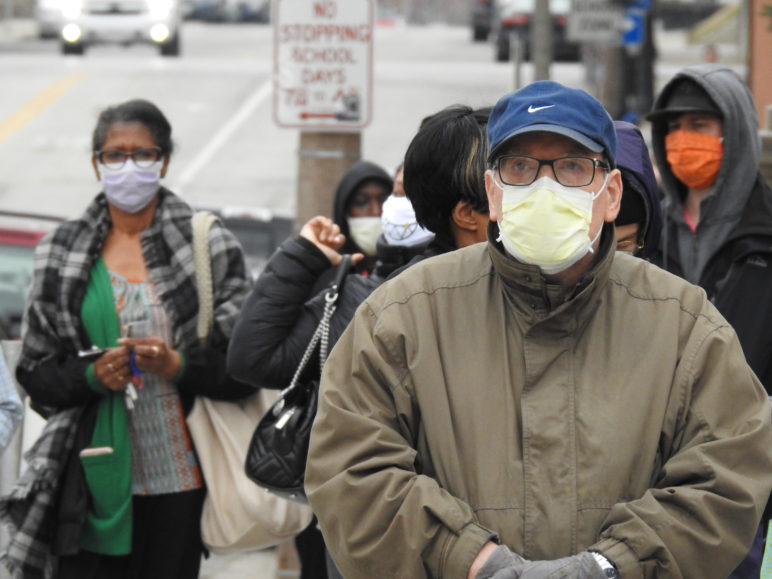Sightline did a deep dive and gave every state a grade on how ready they are to handle requests to Vote At Home. Colorado, Oregon, Utah, and Washington get A grades for safe, secure voting. That’s because all four states already conduct all elections with Vote By Mail. Oregon has run successful all-mail voting for decades. But why does Florida get a B – and Vermont get a D and Texas get an F? And what’s your state’s grade for safe elections?
We developed a grading system to assess each state’s readiness as November approaches and coronavirus continues to create hazards and questions for voters and poll workers. Our grades are based on 15 factors. We gave a weighted score for each, based on whether or not each state:
- Allows any voter to request an absentee ballot
- Gives voters a “single sign-up” option to permanently vote from home
- Uses the voter’s signature to verify their ballot
- Mails ballots or absentee applications to all voters
- Gives ample opportunity to cure signature problems
- Is a member of the Electronic registration Information Center (ERIC)
- Utilizes ballot tracking
- Automatically registers voters and updates addresses
- Includes a postage prepaid return envelope for ballots
- Accepts ballots postmarked by or on Election Day
- Allows early in-person voting
- Voters can request an absentee ballot online
- Voters can register to vote online
- Has enough central scanners to process ballots efficiently
- Anyone may deliver sealed ballots in-person
So, Florida did well on signatures and ballot tracking but not so well on a number of factors that maximize administrative efficiency, like a single sign-up option and automatic voter registration. Texas requires an official excuse to apply for an absentee ballot and Texas courts recently rejected COVID-19 infection concerns as a legitimate excuse. Texas also has a long way to keep voters and elections safe and secure. Vermont doesn’t require an excuse for voters to request absentee ballots but the state loses points for not keeping its voter lists up-to-date by joining the Electronic Registration Information Center (ERIC) and for not giving voters a chance to fix problems with their signature.
What’s Your State’s Grade for Safe Elections in 2020?
| State | Grade |
|---|---|
| Washington | A |
| Colorado | A |
| Oregon | A |
| Utah | A |
| Nevada | A- |
| California | A- |
| DC | B+ |
| Maryland | B |
| Michigan | B |
| Arizona | B |
| Georgia | B |
| New Mexico | B |
| Illinois | B |
| Iowa | B |
| Hawaii | B- |
| Florida | B- |
| Montana | B- |
| Nebraska | B- |
| Ohio | C+ |
| Wisconsin | C |
| New Jersey | C- |
| Pennsylvania | C- |
| Idaho | C- |
| Minnesota | C- |
| North Dakota | C- |
| Rhode Island | C- |
| Alaska | C- |
| West Virginia | C- |
| South Dakota | D+ |
| Vermont | D |
| Delaware | D |
| Virginia | D |
| Kansas | D |
| Massachusetts | B- |
| Connecticut | D- |
| Maine | D- |
| Wyoming | F |
| Texas | F |
| Kentucky | F |
| New York | F |
| South Carolina | F |
| North Carolina | F |
| Indiana | F |
| Tennessee | F |
| Louisiana | F |
| New Hampshire | F |
| Oklahoma | F |
| Alabama | F |
| Missouri | F |
| Arkansas | F |
| Mississippi | F |
The good news is that even as we developed this formula and assigned each state a grade for safe elections over the past several months, many legislators and elections officials in states across the US have hustled to upgrade voting access to prepare for safe voting in their primaries and for the November general election as the uncertainty of the coronavirus pandemic unfolds. We’ve already had the pleasure of bumping up several states’ grades. And the main thing is, we hope to see more states with a good report card by Election Day 2020.
Kristin Eberhard, Director, Climate and Democracy, is a researcher, writer, speaker, lawyer, and policy analyst who spearheads Sightline Institute’s work on democracy reform and on climate action. She researches, writes about, and speaks about elections systems and democracy reform, with particular expertise on Vote By Mail and proportional representation. Eberhard lives in Oregon, an all-Vote By Mail state. She is available to discuss tested, safe, fair COVID-19 election practices, state by state. For interviews, speaking engagements, and media inquiries, contact Anna Fahey. Find all Eberhard’s latest research here.










Eric
I’d like to see more methodology and data here. How did each state do on each of the 16 factors? What were the top 3 reasons for any given A or F?
Anna Fahey
Thanks for the note, Eric. The factors listed first were weighted more heavily, so doing well or poorly on those has a big effect on grades. That said, a state that did well on one of those but poorly on everything else would do poorly.